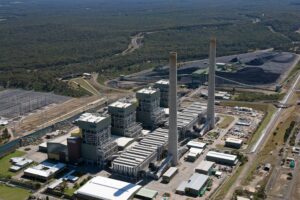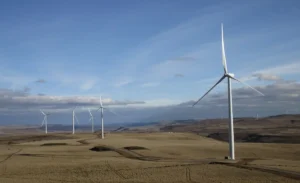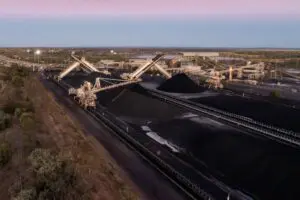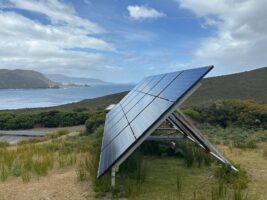Renewable energy sources including wind, solar and hydro replaced more than half of the capacity lost through the closure of the Hazelwood brown coal generator, new data shows.
This graph above – courtesy of the Australian Energy Market Operator – shows that, contrary to most expectations and assessments, the brown coal genertion lost through the Hazelwood closure was not replaced by black coal generators elsewhere.
Sure, the output of black coal generators increased – in fact to their highest levels since 2009 – and the remaining brown coal generators also increased their output.
But the majority of the replacement capacity came from a combination of solar, wind and hydro.
The wind and solar plants would have come through new additions to the grid, with around 400MW of added supply on average.
Hydro also increased by an average 335MW, or 30 per cent.
The share of wind and solar is expected to increase as more wind and solar farms are completed after finally beginning construction following a three-year investment freeze cause by the Coalition’s attack on the renewable energy target.
The investment is also being helped by Victorian government initiatives, and this will be accelerated as the 40 per cent state target by 2025 begins to take shape.
Interestingly, the supply of gas fired generation dropped – by an average 268MW – presumably because of the high cost of gas generation and its inability to compete with other sources.
Another interesting graph is this one above, which shows the changes in energy prices and volatively in different states since the closure of Hazelwood.
It is generally said that the closure of Hazelwood forced Victoria prices up signiciantly, and those in South Australia along with it.
But AEMO has a different perspective. Its results for the first quarter of 2018, compared to the first quarter of 2017, when Hazelwood was still operating, shows that the energy price actually changed little in Victoria, and actually came down in South Australia.
This was probably due to the increase in wind and solar and hydro, and the fact that black coal generators had been reducing their asking price.
What did force headline prices up in Victoria and South Australia was what AEMO calls “weather-driven” volatility – in other words surges to market caps in extreme head days.
This was centred around three days – Jan 18 and 19, when Melbourne temperatures were above 40C for two days and Adelaide was above 43C – and on February 7, another hot day. The January 18 event was worsened by a sudden trip of the Loy Yang brown coal generator.
And so the prices surged to the market cap. That reflects the ability and the willingness of the market to drive prices as high as they can when supply gets tight, and why AEMO wants to encourage more cost-effective solutions to this problem such as demand mangement.
The price spikes in South Australia and Victoria in the first quarter acconted for as much as 30 per cent of the total money spent on wholesale electricity over the first quarter – distorting the market and giving oxygen to the inflated reports about the impact of the Hazelwood closure.
It is also interesting to note on the second graph the impact of the decision by the Queensland government to order – just before its state election – the government owned generators to lower their bidding.
That eradicated volatility i.e. the fossil fuel generators were no longer seeking to maximize profits in maket peaks, and overall prices. So some, that makes another strong argument for more competition, smarter technology, or even government ownership. Or a mix of all three.












